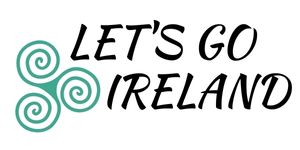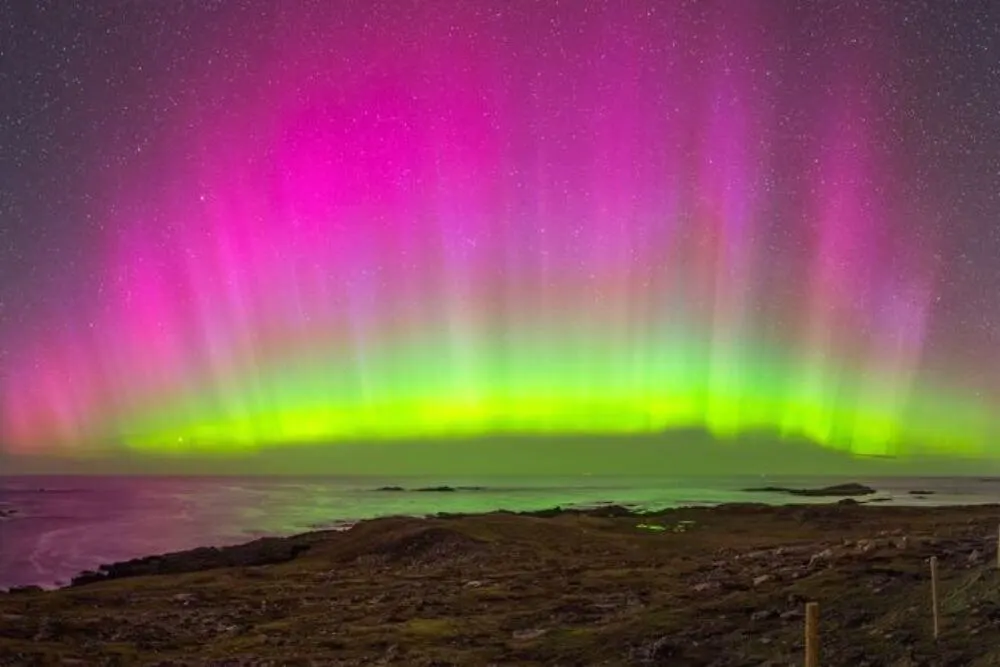
Table of Contents
- 1 Northern Lights Ireland
- 2 What are the Northern Lights?
- 3 What causes the different colors in the Northern Lights?
- 4 What conditions are necessary to view the Northern Lights?
- 5 Can you see the Northern Lights in Ireland?
- 6 Where can I see the Northern Lights in Ireland?
- 7 Where can I see the Northern Lights in Northern Ireland?
- 8 When is the best time of the year to see the Northern Lights in Ireland?
- 9 Where can I find reliable Northern Lights forecasts?
- 10 What equipment do I need to bring with me?
- 11 How can I photograph the Northern Lights?
- 12 Aurora Borealis Ireland
Northern Lights Ireland
The Northern Lights, also called Aurora Borealis, is an awe-inspiring sight that has captivated the minds and imaginations down through the generations.
And it is true, the Northern Lights are an absolutely beautiful and unforgettable natural phenomenon. Having once witnessed it, you will never be able to undo this experience in your mind. It is one of those things that should be on everyone’s bucket list of must-do experiences.
The best places to see the Northern Lights are spots that are located in the Aurora Zone. This zone stretches between 66° North and 69° North and thus includes the Arctic circle, Alaska, Canada, Greenland, Iceland, Finland, Sweden and Norway.
Now, if you wonder whether it is possible to see the Northern Lights also in Ireland, then the short answer is yes. When geomagnetic activity is high, the Auroral band can also stretch to Ireland and the UK.
On this page, we will cover all the answers that you might have, e.g. “Where can I see the Northern Lights in Ireland” and “What is the best time to see the Northern Lights in Ireland”.
February 2023 UPDATE: The northern lights in late February 2023 have been some of the best shows seen in years.
The necessary conditions are excellent! Good luck if you are trying to catch them!
What are the Northern Lights?
The Northern Lights, also known as the Aurora Borealis, is the colorful display of streaming, dancing lights visible in the night sky of the northern hemisphere. The Northern Lights are actually the result of charged electric particles (electrons) emitted from the sun. This cloud of subatomic particles, also known as a coronal mass ejection, is then blown towards the earth by the solar wind hitting the gaseous particles in the earth’s upper atmosphere.
The earth’s magnetic field deflects many of these electrically charged particles. However, the magnetic field around the north and south poles is weaker. This allows the particles from the sun to collide with oxygen and nitrogen gas in the earth’s atmosphere resulting in either the Northern or Southern Lights (Aurora Australis).
The intensity of Northern Lights depends on the phase of the 11-year solar cycle. When there is a so-called solar maximum or solar max, more solar flare energy is emitted into space, which causes a stronger geomagnetic storm, which in turn means more aurora activity.
What causes the different colors in the Northern Lights?
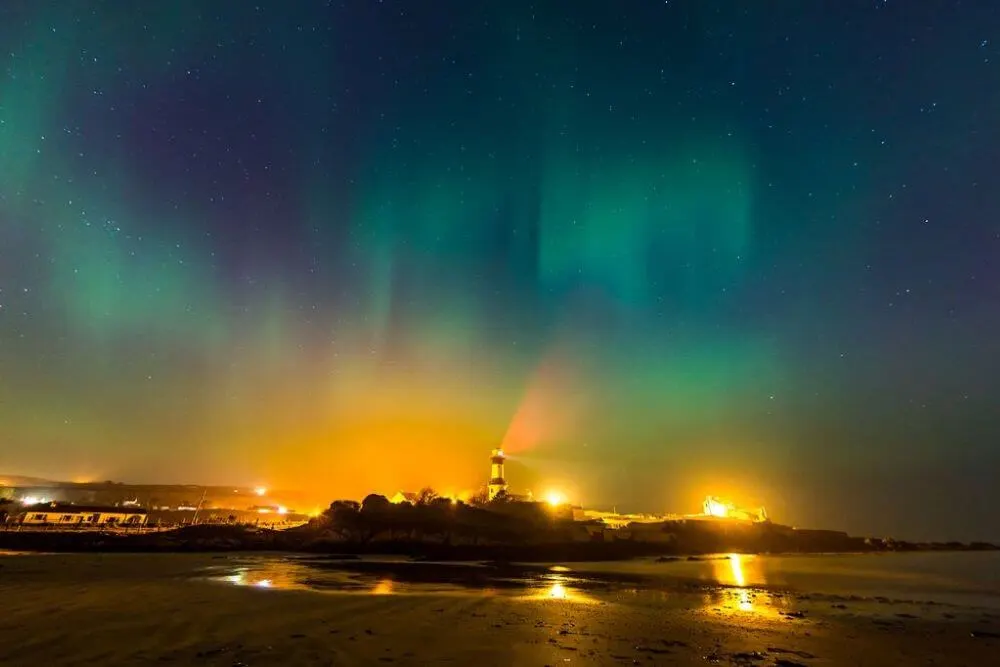
During the collisions between particles, energy is exchanged. The amount of energy exchanged, as well as the type of gas, determines the color of the lights. Oxygen molecules emit yellowish-green light and pale red. Nitrogen, on the other hand, usually emits a blue light.
What conditions are necessary to view the Northern Lights?
Clear night skies, free of clouds are the best for viewing the Northern Lights. It is impossible to see the Aurora Borealis during daylight hours. Also, the chance of seeing the Northern Lights through thick cloud cover is virtually zero. But do not worry if there is a little scattering cloud, as it might actually just make the entire spectacle a bit more interesting depending on how the colors can be seen through the clouds.
Light pollution from buildings, traffic and street lights greatly reduces the visibility of the Northern Lights. That is why if you want to see the Northern Lights Dublin is definitely not the best location in Ireland to see them. Thankfully, the pollution from lighting in rural Ireland does not interfere as much, enabling you to see the Northern Lights more clearly.
The best locations to see the Northern Lights are in an area that has very limited light interference, such as a national park, on a remote headland or a beach. Moonlight can also impact on the Northern Lights, especially if it is a weak aurora in front of the moon.
Can you see the Northern Lights in Ireland?
Yes, you can see the Northern Lights in Ireland, at least when the conditions are right. This means that the solar activity and weather forecast must both be in your favor, neither of which you can guarantee or predict very far in advance. So to be clear: you should not travel to Ireland with the expectation of definitely being able to witness the aurora there.
While Ireland does not get as much aurora action as the Nordic countries (Iceland, Norway, Sweden and Finland) for example, Ireland’s Northern Lights experience on the periphery of the auroral reach is a uniquely beautiful encounter in itself. Usually the Northern Lights in Ireland are seen on or just about the horizon to the north (rather than overhead as in the countries further north) with colors sometimes being reflected in the Atlantic Ocean.
Where can I see the Northern Lights in Ireland?
First off, it is possible to see some beautiful auroral displays in Ireland. Generally speaking, when all of the necessary conditions are in place, the northern headlands of County Donegal and coastal areas of County Sligo offer some of the best vantage points for viewing the northern lights in Ireland.
If the Northern Lights are very strong, many areas particularly along the west coast all along the Wild Atlantic Way, which receives less light pollution, might be in with the chance of seeing the Northern Lights.
Northern Lights Donegal
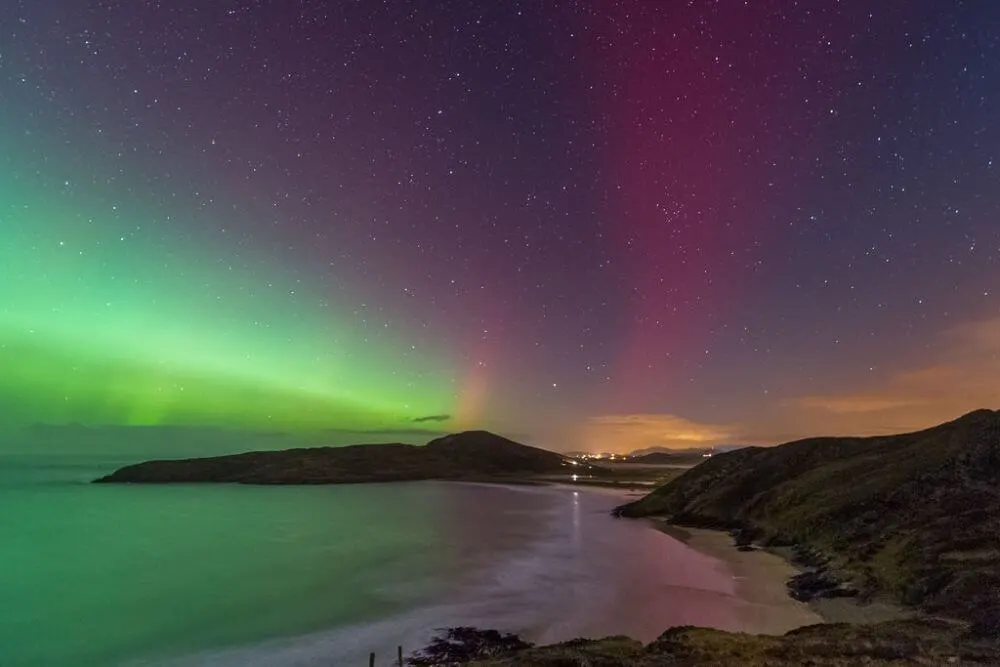
If there is an aurora alert for “Northern Lights Donegal Tonight”, then the best places you should head to are on the Inishowen Peninsula, Fanad Peninsula and Rosguil Peninsula. Here are some of the most well known spots:
- Malin Head, Inishowen Peninsula: This headland is the most northerly part of the island of Ireland, possibly the best place to catch the northern lights. (Did you know? Malin Head is also called Banba’s Crown (Banba being another name for Ireland).
- Dunree Head, Inishowen Peninsula: There is limited light pollution at Dunree Head and unobstructed northerly views making it a good spot to observer the Northern Lights
- Mamore Gap, Inishowen Peninsula: This elevated location is far from light sources and can offer good views of the night sky
- Ballyliffin, Inishowen Peninsula: Head to the beaches here to get a good view northwards
- Fanad Head, Fanad Peninsula: Another headland with unobstructed views to the north
- Viewing Point on Rosguil Peninsula: This slightly elevated viewpoint as clear views to the north
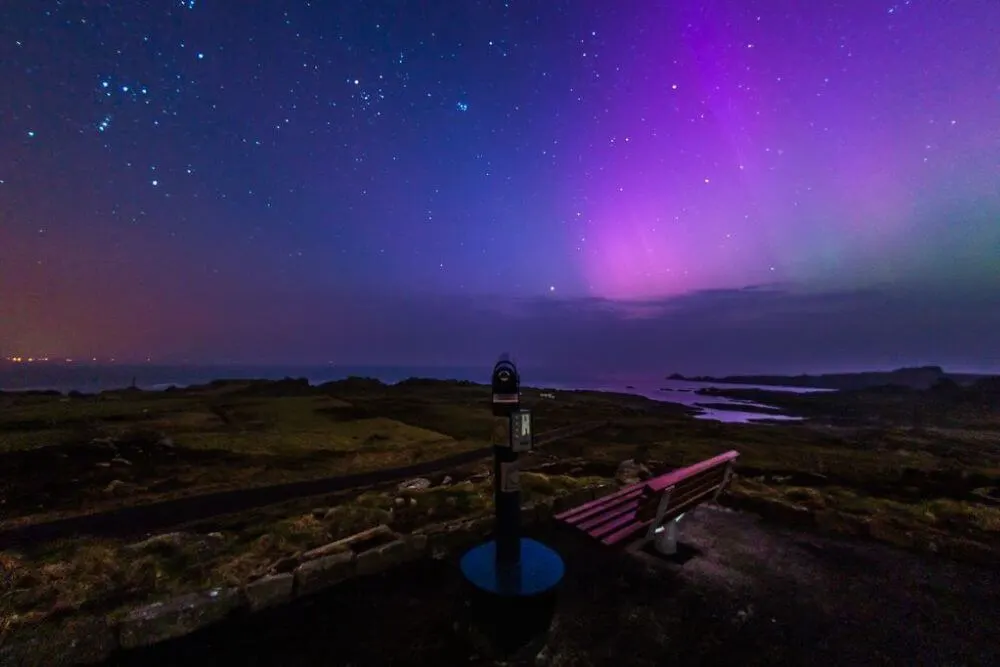
Further south in County Donegal, the Northern Light can also be viewed from the area around Glencolmcille and Sliabh Liag. (The views from these locations are more to the north west rather than directly north.)
(Bonus information: For those of you who are not familiar with the geography of the island of Ireland, this might be a bit confusing. In case you are wondering is Donegal in Northern Ireland (UK), then no, it is not. Donegal is the most northerly county in the Republic of Ireland and contains Malin Head, the most northerly point on the mainland of the island of Ireland. It borders the counties of Derry, Tyrone and Fermanagh, which are in Northern Ireland.)
Northern Lights Sligo
If you are closer to Sligo when there is a Northern Lights Forecast Ireland in place, then some of the best spots to catch a glimpse of this spectacle are close to Easky. This location offers unobstructed northerly views. Mullaghmore is another alternative, although the views are not quite as expansive as those in Easkey.
Northern Lights Mayo
Mayo is home to one of Ireland’s Dark Sky Reserves, so if you are lucky enough to experience the right conditions, you know that light pollution won’t interfere too much with your views of the Northern Lights at this location.
Plan to go to the coastal areas around Belmullet, such as Erris Head to get a good vantage point.
Northern Lights Kerry
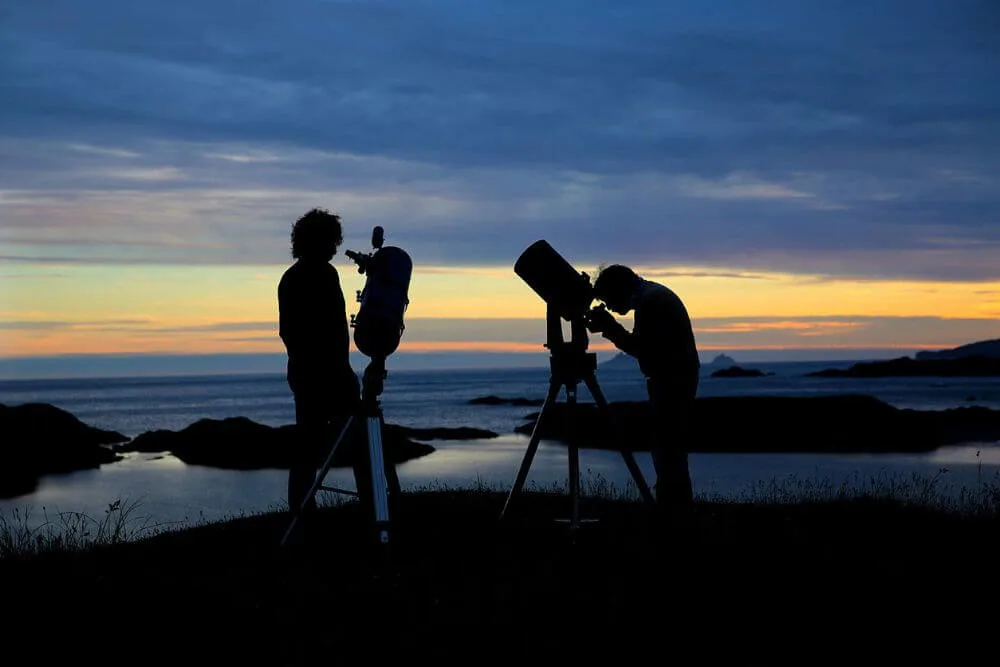
When the Northern Lights are strong, there is a small chance of seeing them as far south as County Kerry, especially if the area has little light pollution. Kerry is home to the other one of Ireland’s Dark Sky Reserves, near Ballinskelligs on the Iveragh Peninsula. Even if you don’t see the Northern Lights, on a clear night you will have superb starry views of the sky.
Where can I see the Northern Lights in Northern Ireland?
The Aurora Borealis Northern Ireland spectacle can be seen from the northerly headlands along the coast. As always, it is best to be as far away from light pollution as possible in order to get the best views.
Northern Lights Northern Ireland – Best Locations
- Dunluce, County Antrim: Northerly headland with the striking ruin of Dunluce Castle
- Ballintoy, County Antrim: Harbor with direct north view
- Whitepark Bay Beach, County Antrim: North facing sandy beach
- Rathlin Island, County Antrim: Island located ca. 8km (5 miles) off the coast of County Antrim with few inhabitants
When is the best time of the year to see the Northern Lights in Ireland?
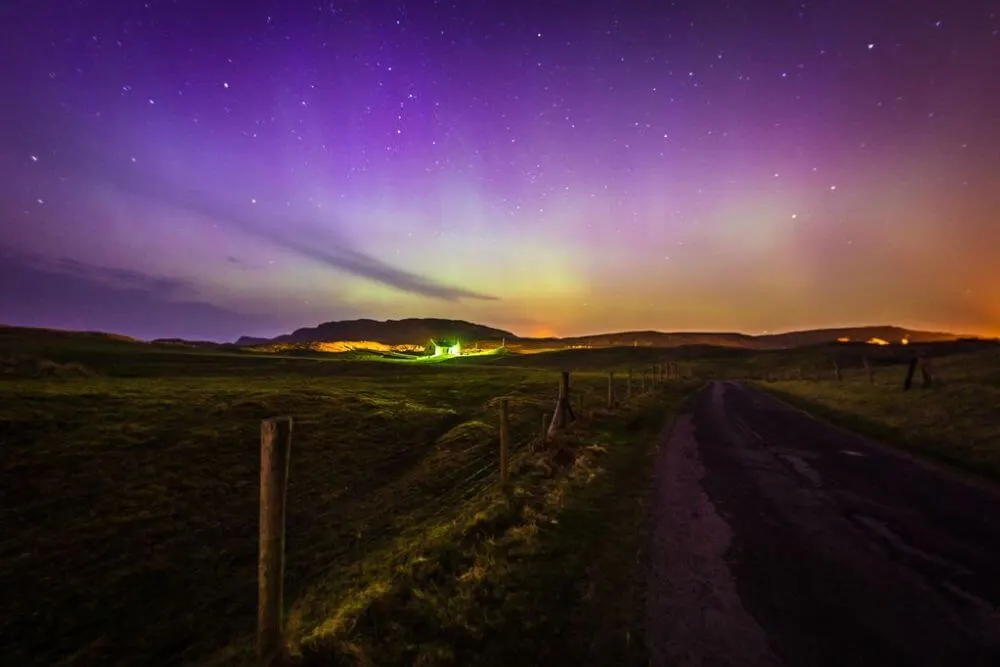
Although it is possible to see the Northern Lights at any time of the year, there is a greater chance of seeing auroras during the months of winter and spring (November to March), with some more aurora activity generally being recorded around the equinoxes.
November to March is also the best time in Northern Ireland to view the Northern Lights.
Patience is important while waiting for the aurora lights. Even when there is aurora activity, it must also coincide with clear skies, which can be an issue in Ireland.
(For a detailed guide about the weather in Ireland, as well as in depth guides about the weather in Ireland by month, we have you covered!)
It is worth remembering that there is absolutely no certainty that the Northern Lights will make an appearance. This makes the experience of an aurora viewing all the more magical, if it actually takes place.
Where can I find reliable Northern Lights forecasts?
Global General Information
The best Northern Lights forecast by far (according to my knowledge and research) can be found on the website of the Space Weather Prediction Center by the National Oceanic and Atmospheric Administration. There you will find a 30 Minute Aurora Forecast that shows the intensity and location of the auroras (not just of the Northern lights in the Northern Hemisphere, but also of the Southern Lights, or Aurora Australis in the Southern Hemisphere).
They also released a feature where you can see an Aurora 3 day forecast (based on the predicted global geomagnetic activity index).
Another great Auroral forecast site is www.spaceweather.com, where you can look at the current conditions of the solar wind and other statistics and predictions.
Northern Lights Ireland Forecast
For Ireland, there is no dedicated Aurora Borealis forecast website, but there is a Twitter account called “Aurora alert Ireland“, which tweets when the Northern Lights are visible over Ireland. (It hasn’t been very active lately though.)
What equipment do I need to bring with me?
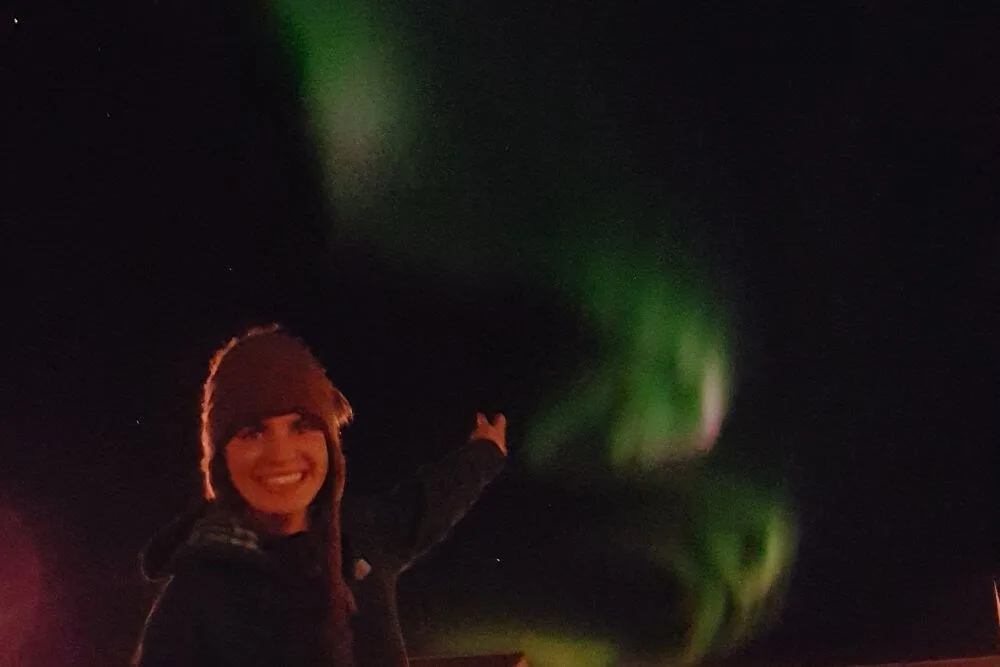
Firstly, you need to make sure that you are wrapped up warmly with the necessary warm coat, hat, scarf and gloves. Standing around in the cold can be bone chilling, so don’t forget to wear two pairs of socks too!
Pack a flask for some tea or hot chocolate too. This works wonders to warm your hands as well as your insides!
Walking along Irish headlands in the dark is dangerous, so a torch or flashlight to guide you is essential.
Many people make the mistake of relying on their mobile phones to take photos of the Northern Lights (like us…see photo). Anyways, even the best camera phones cannot compare to a proper camera. Ideally you will need a manual camera with a full-frame DSLR. In the best case, you also have a wide angle lens with swift aperture.
Additionally, in order not to get a blurry shot like we got above, you want a sturdy tripod.
Expert tip (because this has happened to us): Cold conditions zap the energy from batteries. So make sure to always have a few spare batteries on board. Also, it doesn’t do any harm to have a spare memory card.
And most of all, you need patience and some luck in order to witness a great auroral display.
Note: Please be aware that light pollution might hinder other Aurora seekers from having the best experience possible. So make sure to turn off your car’s headlights out and keep the use of torches and other sources of light to a minimum.
How can I photograph the Northern Lights?
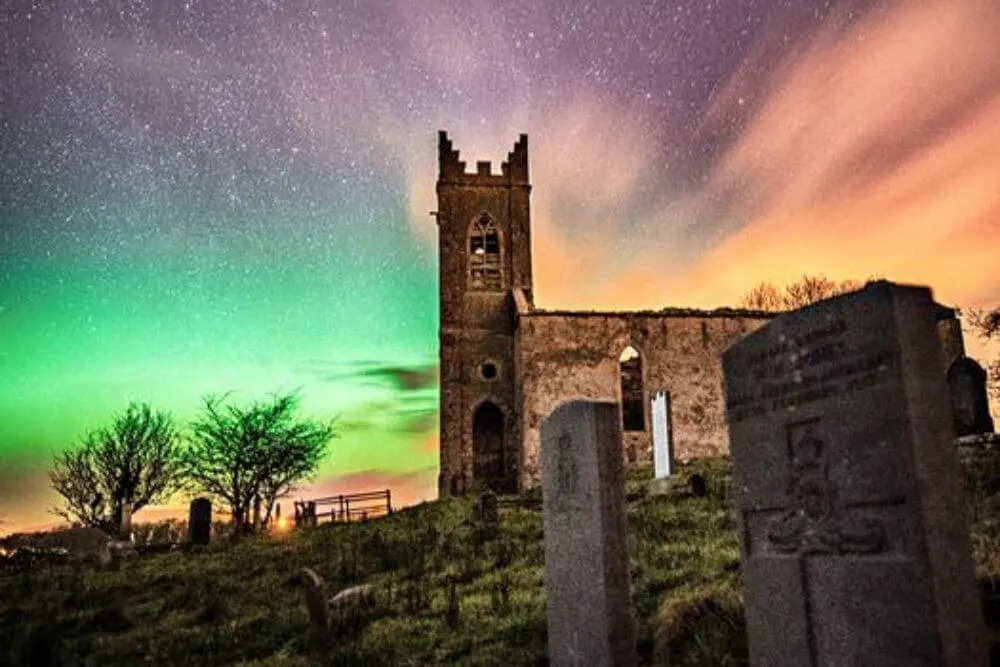
If the requirements are right (dark sky, not too cloudy, high aurora activity, patience level still acceptable and conditions of feet and hands not comparable to ice blocks yet), then use the following steps (best case, you have tried the settings out at home beforehand, so that it doesn’t take too much effort, to work it out):
1) Set up your tripod, mount your camera on it
2) Set your camera to manual
3) ISO setting: Most photographers recommend using ISO 1600 (that will make your photo appear brighter; the higher the ISO setting, the brighter the image gets)
4) Focus your lens to infinity, make sure it is in focus
5) Aperture should be at the lowest number as your lens permits it (this makes the opening of the lens bigger, meaning more light can get in)
6) The exposure time depends on the aurora activity, try maybe 20 seconds for a start (faster auroras need less exposure time)
7) Take some practice shots to see that the images are not blurry
8) Wait and hopefully capture some beautiful shots
Bonus Tip for Ireland Aurora Borealis Photography: The following photographers have captured some fantastic shots of the Northern Lights in Ireland:
- Adam Rory Porter Photography
- Brendan Alexander of Donegal Skies
- Rita Wilson Photography
- Michael Gill Photography
Aurora Borealis Ireland
These resources will hopefully guide you to the right locations to see the Northern Lights Ireland 2023!
Now all you have to do is hope for the right conditions and weather in Ireland.
This post may contain affiliate links. If you click on one of them, we might receive a small commission (at no extra cost to you). Thanks for your support!
